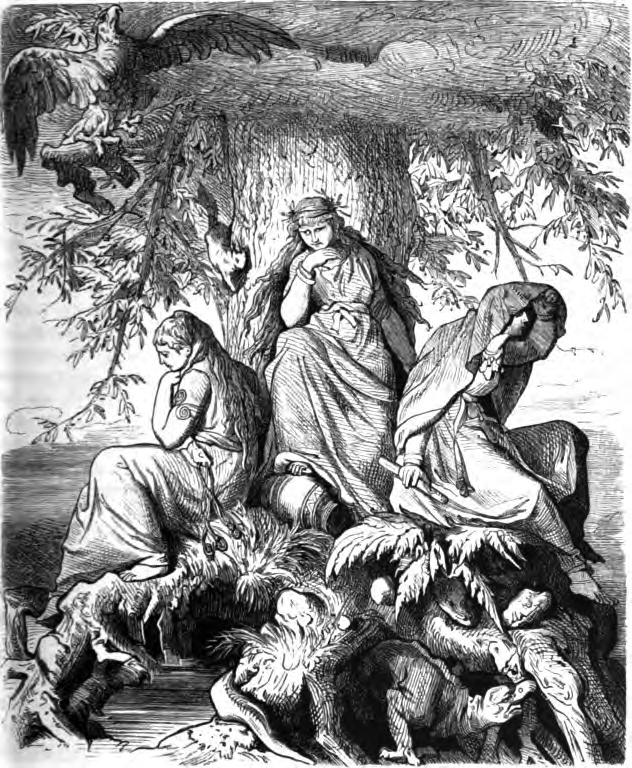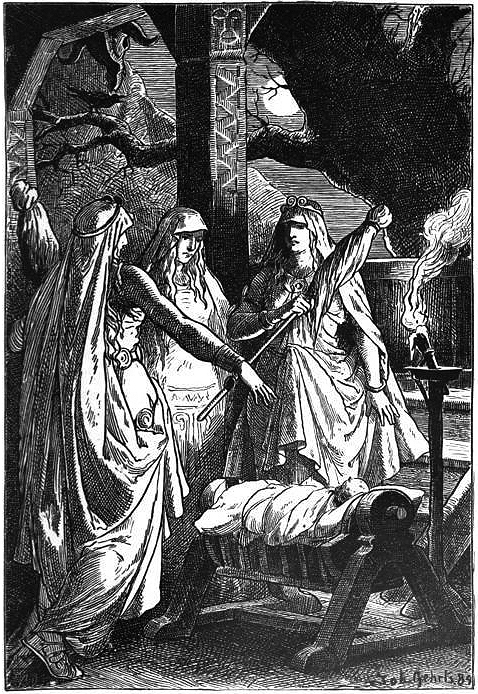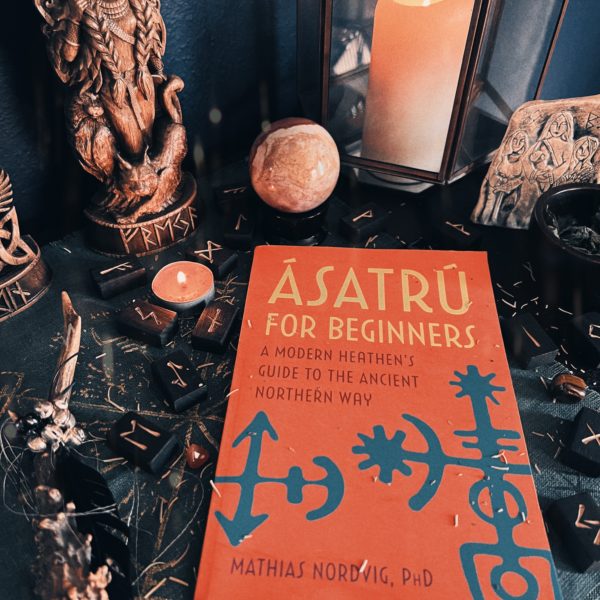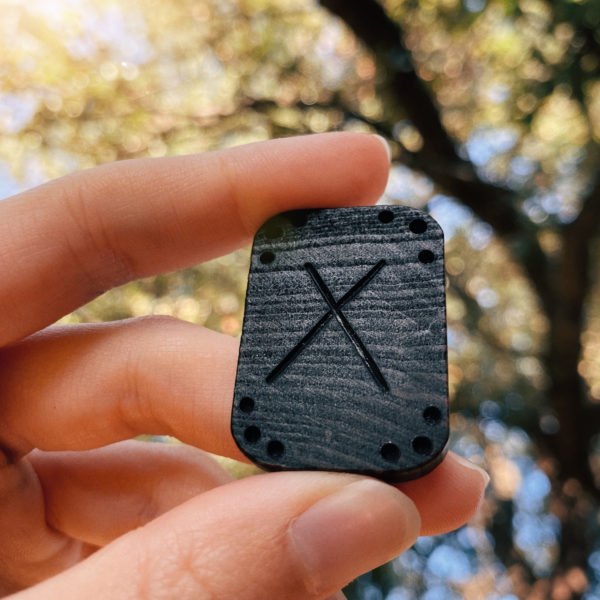
“Thence come the maidens mighty in wisdom
Three from the dwelling down ‘neath the tree
Urth is one named, Verthandi the next
On the wood they scored—and Skuld the third
Laws they made there, and life allotted
To the sons of men, and set their fates.”
– Vǫluspá, Henry Adams Bellows translation
This excerpt from the poem Vǫluspá describes the Norns: the three beings who shape the course of not just human destinies, but of the cosmos as a whole.
Their “dwelling down ‘neath the tree” is beside the well Urðarbrunnr (also known as the Well of Urðr or the Well of Wyrd), which sits beneath the World Tree.
The names of each of the three Norns hints at their roles as deciders of fate:
✧ Urðr: what has happened
✧ Verðandi: what is happening or becoming
✧ Skuld: what should or ought to happen

Unlike the Greek Fates, who are depicted as spinning and cutting the threads of life, the Norns are portrayed in the old texts as carving wooden sticks to set an individual’s fate.
That said, the word “Norn” itself may derive from a word meaning “to twine,” possibly alluding to the threads of fate.
While some of the Old Norse texts reference these three “main” Norns, others imply that there are many Norns, some benevolent and some malevolent.
The dragon Fafnir tells the hero Sigurd:
“Of many births
the Norns must be
Nor one in race they were
Some to gods, others
to elves are kin
And Dvalin’s daughters some.”
In my practice, I call upon Urðr, Verðandi, and Skuld before casting runes, and I thank them afterwards for sharing a glimpse of fate with me.
Do the Norns have a place in your personal practice?




Leave a Reply